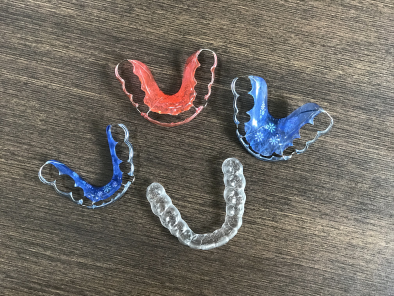Teeth Straightening
- Introduction
- Invisalign
- Damon braces
- Ceramic braces
- Metal braces
- Retainers
Introduction
Poor bite and crooked teeth are considered as a malocclusion which sometimes effects on function and esthetic. There are many reasons why teeth do not develop to normal-appearance and function. The common reason is the intermarrying of persons from different countries, races, or generic backgrounds. Different persons have different physical characteristics, and their children sometimes have combinations of these features. This often leads to the result of large teeth in a small jaw or the reverse, and the appearance and function of the dentition is abnormal.
When left untreated, many minor orthodontic problems may become worse, contributing to abnormal wear of tooth surfaces, gum disease, dental decay and etc.
Benefits:
- Better teeth alignment teeth are easier to keep clean, resulting in better oral health
- Improve facial profile and appearance
- Properly aligned teeth make our chewing more efficiently, which helps digestion
- Aligned teeth create a better bite, which reduces stress, headache, and strain on your supporting bone and tissue
- According to the American Association of Orthodontists, crooked and crowded teeth are hard to clean and be maintained. This may contribute to conditions that cause not only tooth decay but may also lead to gum disease and tooth loss.
A nice smile is not only beautiful, but it also promotes good health.
Limitations:
1) Long treatment duration
2) More expensive
3) Facial profile change
4) Jaw surgery may be required (in some cases)
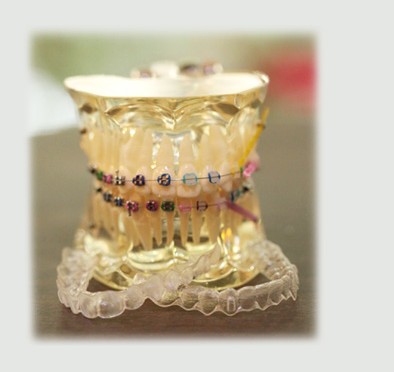
Invisalign
Invisalign is the invisible way to straighten teeth without braces. Invisalign uses a series of clear, removable aligners to gradually straighten teeth, without metal or wires.
Invisalign uses 3-D computer imaging technology to depict the complete treatment plan from the initial position to the desired position from which a series of custom-made, clear “aligners” are produced. Each “aligner” moves teeth incrementally and is worn for about two weeks, then replaced by the next in seriesuntil the final position is achieved.
Benefits:
- Invisible due to clear aligners
- Easy to remove and clean teeth
- Shorter treatment duration (in certain cases)
- Less treatment visits
- More comfortable, less irritation
Limitations:
- Limit to certain jaw position case severe crowding case
- Higher price than other methods
Types:
- Invisalign Express
- Invisalign Lite
- Invisalign Moderate
- Invisalign Comprehensive
Treatment fee : There are 4 kinds of invisalign
- Invisalign Express : 85,000-95,000TH
- Invisalign Lite : 155,000-165,000THB
- Invisalign Moderate : 175,000-185,000THB
- Invisalign Comprehensive: 195,000-215,000THB
Clinical and x-ray evaluation are necessary to determine which kind of invisalign is applicable on your case.
Treatment step is as the following :
- Consultation : clinical and x-ray examination.
- Necessary basic dental treatment such as cleaning and cavities filling.
- 3D scan taking to send to USA for aligner processing.
- Clincheck presentation : it is a computer simulation from the beginning till the end of your
- treatment. (This step will be 3-7 days after the third step)
- Invisalign delivery (about 15-20 days after clincheck approval)
If you don’t need any necessary dental treatment (step 2), we can run step 1and 3 in one day. Step 4 can be discuss via email. You need to visit us again in step 5 for1 day which is around 2 months after step 3.
You may send us your teeth photo via email for initial evaluation.
Please contact us
Telephone : 02-255 6787
Moblie : 086-3936231
Email : info@truthdental.com
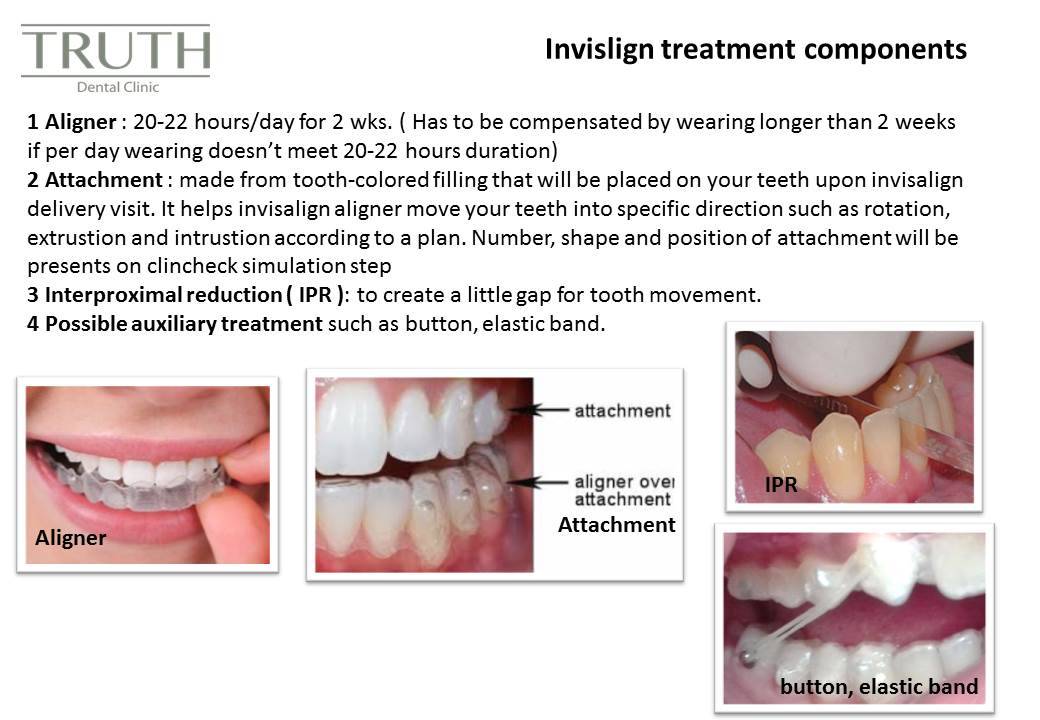
Damon braces
What makes the Damon System different?
It’s more than just a bracket.
– Tie-less braces that don’t need to be “tightened” and are gentle to the teeth and tissues.
– High-technology wires that move teeth quickly and require fewer adjustments than traditional braces.
– A clinically proven treatment approach that aligns teeth and enhances facial aesthetics.
Damon System braces use a passive Slide mechanism to maintain wires within the bracket, allowing them to move more freely. This reduces friction so teeth move quickly and more comfortably
Traditional braces use elastics or active clips that “bind” wires in place.
Elastics and active clips used to hold the wire can act like parking brakes, resulting in friction and pressure, which can slow treatment and make it less comfortable

Ceramic braces
Inspire ICE clear bracket!!
Unlike ceramic brackets that are opaque and colored to mimic a particular tooth shade, Inspire ICE™ brackets are crystal clear and virtually disappear regardless of tooth shade. The only completely transparent bracket on the market, Inspire ICE is the only true aesthetic solution for ALL patients.
Inspire ICE has an ultra-smooth, heat-polished surface that dramatically reduces friction. Laboratory tests prove the frictional resistance of Inspire ICE to be better than ceramic brackets with a metal slot insert.
Note: Testing performed with .017 x .025 Copper Ni-Ti® archwire in .018 slot brackets.
Advances in heat-treatment technology allow us to produce brackets that are twice as resistant to breakage than other ceramic appliances.
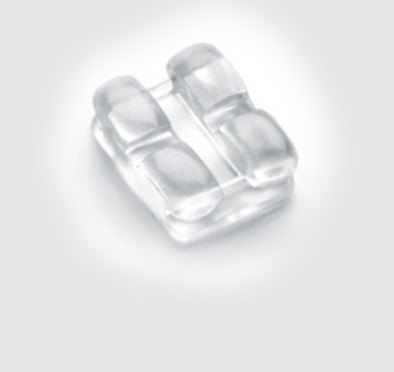
Metal braces
Metal or traditional braces are the most common type of orthodontic treatment.
This orthodontic treatment is composed of three major components:
1) Bracket
2) Wire
3) Elastic o-ring (attach the wire to the bracket)
This treatment requires monthly visit to adjust the wire and change the plastic o-ring.
Treatment duration depends on the case but usually is around 2-3 years.
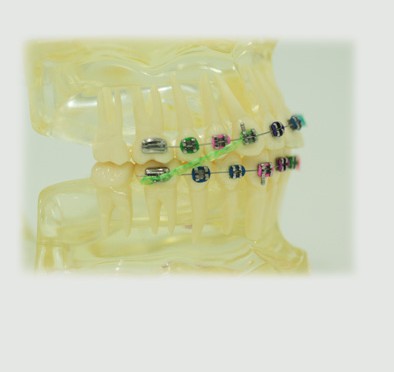
Retainers
Orthodontics Retainer
During orthodontic treatment your teeth are held in position by your braces, but once they’re removed, stretched elastic fibers in the gum try to pull the teeth back to their original position – something we call “orthodontic relapse”. It takes time for these fibers to remodel and stop pulling on the teeth.
Retainers will be custom-made to fit you perfectly. We’ll take impressions of your teeth when we remove your braces and fit your retainers the following week. Don’t worry if your teeth move slightly in the meantime – your retainers will squeeze everything back into place.
There are 3 kinds of retainer:
- Hawley retainer
This retainer design typically involves wires and clasps anchored around the six anterior teeth and keeps them in place by incorporating 2 omega loops for adjustment with a relatively thick plastic body. This covers over the roof of the patient's mouth or else lies along the tongue side of their lower teeth. Sometimes it's constructed using plastic that has bold colors or a personalized design.
Pros:
- The metal wires can be adjusted to guide your teeth back into place.
- Easy to construct.
- Allows prosthetic tooth/teeth to be added on.
Cons:
- Inferior aesthetics.
- Interference with speech.
- Risk of fracture.
- Inferior retention of lower incisors in comparison to vacuum-formed retainers.
- May trick mouth into producing extra saliva.
- Clear retainer
Retainer is made from a vacuum formed retainer. This is a polypropylene or polyvinylchloride (PVC) material, which is more economical and faster to make, typically .020" or .030" thick.
Pros:
- Less expensive.
- Less visible.
- Easier to wear than Hawley retainers.
Cons
- Prone to rapid breakage and deterioration in patient who has bruxism.
- May trick mouth into producing extra saliva.
- Fixed Retainer
Pros:
- Good for poor compliance patient.
- Less annoying.
Cons:
- Increased difficulty in cleanliness as dental floss cannot be used.
- Patient requires regular dental visits.
